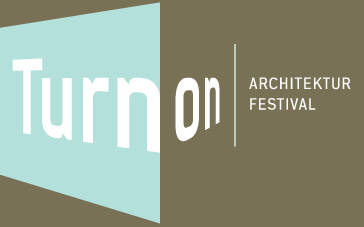With our planet's limited resources it is not possible to build for seven billion people safe and good houses in steel and concrete only. The use of natural building materials is vital in order to enable a sustainable and fair development. Natural materials such as mud often have a bad image. We need pilot projects to proof the excellent structural quality as well as their beauty and uniqueness in order to anchor them in contemporary architecture.
Local materials + local energy resources (especially human labour) + global creativity: This is the underlying concept of all the projects of studio Anna Heringer. We believe in a global strategy for sustainability, one that can be multiplied seven billion times. We want to create an architecture out of existing potentials that brings the best out of the sources naturally available, creating work opportunities for many. We currently have seven billion people and we need work for all. A youth without hope for a meaningful work leads to a destabilization of a society.
As architects we have an enormous responsibility. The way we design our buildings, the choice of a building material, a building technology defines how much work opportunities are created. Natural, non-standardized materials like mud, stone, bamboo need a comparatively high input of human labour.
Bamboo Hostels, China
Within 2011 and 2014 China consumed more cement than the United States during the entire last century. The three hostels in rural China show an alternative in building with natural materials: unlike many traditional houses that hide mud behind fake façades, this project celebrates the beauty of natural materials in order to re-anchor them in contemporary architecture.
PORET Kindergarten, Zimbabwe
The permaculture community PORET in Zimbabwe is a client who has inhaled the philosophy of a holistic sustainability. With this project we want to be gentle to the soil, the water, the atmosphere and the people.
My lesson from Bangladesh is, that the most successful development strategy is to make the best out of existing potentials and resources. In that way our team kept the eyes open for the special potentials in Zimbabwe and tried to use them in a playful way.
I have a dream that we build our homes, villages, and cities out of materials that can be taken from nature and returned to it without causing any harm. I dream that we design our construction processes in a way that create work opportunities for the many.
I dream that our children have a chance to live on a healthy planet, in a peaceful world, filled with cultural diversity and beauty.
A.H.
Anna Heringer, born 1977 in Rosenheim, Bayern. 1999–2004 studies of architecture on the University for Arts and Industrial Design in Linz. Collaboration with Martin Rauch, UNESCO Chair for Earthen Architecture, Constructive Cultures and Sustainable Development ETH Zürich.
2005 foundation of Studio Anna Heringer.
Completed projects (selection): METI – Handmade School in Rudrapur (2006), HOMEmade – pilot project for rural housing in Bangladesh (2008), Desi – Vocational school for electrical training in Bangladesh (2008), Mudworks or "Mud Hall" at Harvard's Graduate School of Design (2012), Bamboo Youthhostel in the Chinese Township Baoxi (2015), Kindergarden for PORET, Zimbabwe (2015).
Current projects (selection): Majiayao Ceramic Museum, China, with masterplan for the museum island, Omicron "Hot Spot Crossing Border", with Martin Rauch.
Awards (selection): Emerging Architecture Award, Architectural Review, winner (2006), Kenneth F. Brown Asia Pacific Culture and Architecture Design Award, winner (2007), Archiprix International – Hunter Douglas Award "World best graduate projects", winner (2007), Aga Khan Award for Architecture, Tenth Award Circle (2007), Emerging Architecture Award, winner (2008), World Architecture Community Award First Circle for HOMEmade and Third Circle for DESI (2008), Swiss Solar Award, winner for DESI with Shanti e.V. (2009), The European Colour Design Award, winner (2009), Curry Stone Design Prize, finalist (2009), First Prize UIA Competition: Training Centre for Sustainable Development in Marrakech (with Martin Rauch, Nägele&Waibel architects, Salima Naji), Global Award for Sustainable Architecture, winner (2011), Holcim Award for Sustainable Architecture, bronze for the region Africa and Middle East (2012), archVision Women in Architecture Award (2014), Schelling Award, special mention (2014), Bauherrenpreis for Omicron, nomination (2015).
Weiterführende Links:
www.anna-heringer.com
